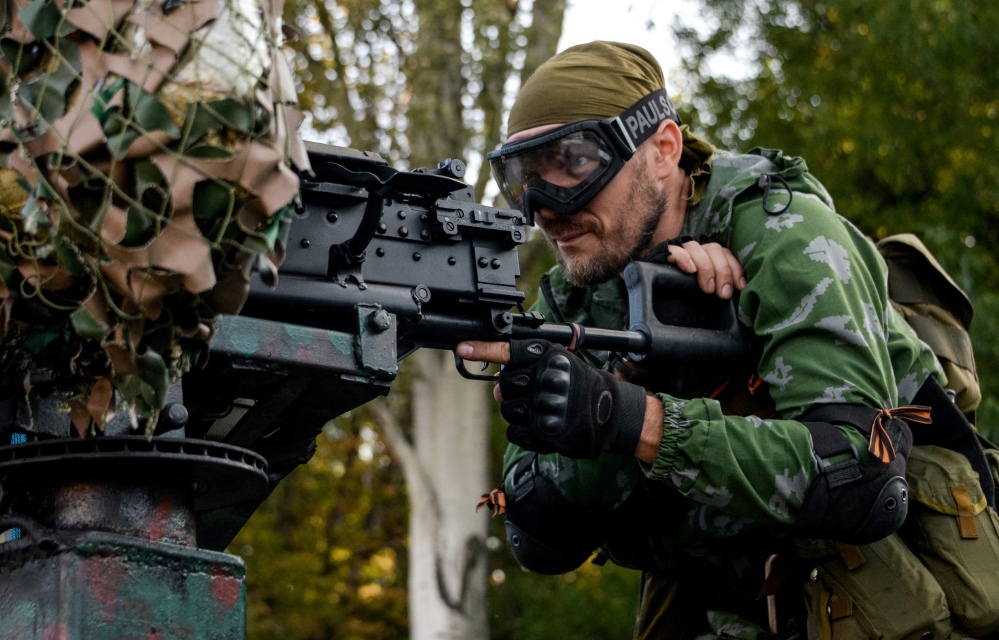WASHINGTON — Confronted by a Kremlin-backed military offensive in Ukraine, President Obama and Western allies will approve plans this week to position at least 4,000 troops and military equipment in Eastern Europe, bolstering NATO’s security commitments to nervous member states near the Russian border.
Ahead of a high-stakes NATO summit that begins Thursday, Obama will also make a symbolic show of solidarity with Eastern Europe when he visits Estonia for meetings with Baltic leaders. He was due to arrive in the Estonian capital of Tallinn Wednesday morning.
Russia’s monthslong conflict with Ukraine comes at a time when members of the NATO defense alliance have been cutting military spending and reassessing the organization’s role after years of peace in Europe. While Ukraine is not part of NATO, alliance members in Eastern and Central Europe fear they could be Russia’s next targets, prompting the 28-nation bloc to seek a more robust response.
“The current situation shows that the principle of collective territorial defense hasn’t gone away – on the contrary,” Estonian President Toomas Hendrik Ilves said Sunday, marking the 20th anniversary of the exit of the last Russian troops from Estonian territory.
Ukrainian officials say their country’s armed forces are now locked in a conflict with not only Moscow-backed separatists, but also the Russian army. Officials said Tuesday that Russian forces had been spotted in two rebel-held cities in eastern Ukraine.
Russian President Vladimir Putin has denied that his forces are invading Ukraine.
For Obama, Russia’s provocations in Ukraine and his response to them have prompted criticism that he has been unable to stop the crisis through his preferred method of steadily escalating economic sanctions. The president remains opposed to intervening militarily.
Still, the U.S. will contribute to the rapid response force that NATO will agree to this week. While the specifics of the operation are to be decided when leaders meet in Wales on Thursday for a two-day summit, U.S. and European officials say it will involve training and deployments in the Baltics, Poland, Romania and other Eastern European nations.
“If there’s anything that the Baltics do trust within NATO, it’s a U.S. commitment,” said Kathleen Hicks, of the Center for Strategic and International Studies.
The U.S. has long provided troops for a NATO response force. Beginning Oct. 1, about 600 troops from Fort Hood, Texas, will be part of that effort.
The goal of the new effort will be to station forces that can deploy within 48 hours.
Obama will also use the NATO summit to urge allies to meet their commitments to devote at least 2 percent of GDP to military spending. Only four NATO nations currently meet that benchmark: the U.S., Britain, Greece and Estonia.
Obama will confront some rifts within the alliance when it comes to dealing with Russia. Despite tough talk about Moscow’s behavior, France is proceeding with plans to send Russia warships, a move the U.S. and Britain have denounced.
Other nations are also concerned that the new rapid response force could violate a 1997 pact with Moscow in which NATO pledged not to permanently station substantial numbers of soldiers in Eastern Europe. Officials say NATO may get around that agreement by referring to its new military commitments as “persistent” rather than “permanent.”
Like Ukraine, the Baltics were ruled by Moscow until the Soviet Union collapsed in 1991. The Baltic countries joined the European Union and NATO in 2004, irritating Russia.
Send questions/comments to the editors.



Success. Please wait for the page to reload. If the page does not reload within 5 seconds, please refresh the page.
Enter your email and password to access comments.
Hi, to comment on stories you must . This profile is in addition to your subscription and website login.
Already have a commenting profile? .
Invalid username/password.
Please check your email to confirm and complete your registration.
Only subscribers are eligible to post comments. Please subscribe or login first for digital access. Here’s why.
Use the form below to reset your password. When you've submitted your account email, we will send an email with a reset code.